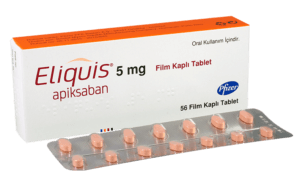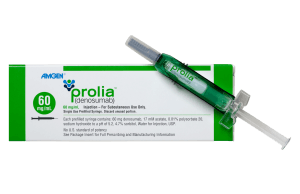
In 2013, the Rheumatoid Patient Foundation (RPF) started this day to spread awareness about the challenges faced by people living with symptoms of rheumatoid arthritis. Studies show that a general lack of public knowledge about RA can cause people who are starting to experience symptoms to delay seeing a doctor, leading to less effective treatment. Early treatment is important because although there is no cure, prompt intervention can lead to remission of RA symptoms.
Rheumatoid Arthritis Awareness Day gives people with rheumatoid arthritis a chance to share their experiences. It helps them raise awareness among family, friends, and their community about the challenges of living with this lifelong condition. This day encourages conversations that are essential for building the support networks that people living with symptoms of rheumatoid arthritis need to handle the ups and downs of their disease.
How prevalent is Rheumatoid Arthritis?
At least 18 million people worldwide are affected by the symptoms of rheumatoid arthritis, and women are two to three times more likely than men to develop RA.
Many people mistakenly believe rheumatoid arthritis is a form of arthritis similar to osteoarthritis, but it isn’t. RA is an immune system disease in which the immune system attacks the joints, and one of the symptoms is arthritis. This is unlike other forms of arthritis, such as osteoarthritis, which is a degenerative disease caused by wear and tear on joints.
The RPF wants to emphasize that arthritis is only one of the symptoms of rheumatoid arthritis. They chose February as their awareness month because it aligns with American Heart Month. The two conditions are closely connected, and people with RA face an increased risk of developing cardiovascular disease.
What are the signs and symptoms of rheumatoid arthritis?
Rheumatoid arthritis is often felt in smaller joints, like those in the hands and feet, but it can also impact the wrists, elbows, and ankles. Beyond joints, RA may affect other parts of the body, including the skin, eyes, lungs, heart, and kidneys.
Rheumatoid arthritis causes symptoms like pain, swelling, stiffness, and warmth in joints. Stiffness may last over an hour after waking up. Some people experience flare-ups with increased joint soreness, followed by periods with few symptoms, while others may have symptoms that gradually worsen over time.
The exact cause of RA is unknown, but the risk is higher for individuals with a family history of RA or those who smoke. It is important to see a doctor promptly if symptoms of RA appear or if there are concerns about having the condition.
How is rheumatoid arthritis treated?

Doctors often recommend a mix of medications to manage joint pain and reduce damage. Pain relief options may include paracetamol-based medications like Muscol and non-steroidal anti-inflammatory drugs (NSAIDs) like Advil. For long-term relief and to slow joint damage, disease-modifying antirheumatic drugs (DMARDs) like Methotrex are commonly prescribed, especially when treatment begins early. Corticosteroids, such as prednisolone, can also help reduce pain and stiffness during flare-ups.
Other treatments
Omega-3 is a healthy fat found in foods like certain types of fish and is also available in fish oil supplements, which may help reduce pain and inflammation. Other potential treatments for pain include acupuncture, which involves inserting thin needles into specific points on the body to stimulate nerves and promote healing; Transcutaneous Electrical Nerve Stimulation (TENS) therapy, which uses electrical currents that interrupt pain signals to the brain; and Cognitive Behavioral Therapy (CBT), a psychological approach that helps individuals manage pain by changing negative thought patterns and developing coping strategies. A doctor can determine if these options might be effective.
Diet and lifestyle modifications
A healthy diet is essential for managing symptoms of rheumatoid arthritis. This means eating plenty of fruits, vegetables, and whole grains like oats or brown rice, as well as foods rich in omega-3. It’s best to limit fatty, sugary, and salty foods. Regular exercise is also important, as it can improve physical function, support a healthy weight, and boost both mental and physical health.
It’s important to pick low-impact activities that are easy on painful joints and enjoyable to do. A physiotherapist can help create a suitable exercise plan. Simple changes at home, like modifying how daily tasks such as cleaning or gardening are done, can also make managing pain easier.
Occupational therapists assist individuals dealing with joint pain or stiffness by suggesting tools to ease strain like long-handled dustpans to prevent bending or book holders to reduce hand and wrist stress. They also provide personalized tips to prevent falls and promote safety at home.
What’s happening on Rheumatoid Arthritis Awareness Day 2025?
This year’s designated day, people are encouraged to plan an event to raise awareness. Join the conversation on social media by using the hashtags #RheumDay, #TheRealRD, and #RheumAwarenessDay. Show your support by wearing indigo and gold, and remember that arthritis is just one symptom of the disease.
FAQs
Can Rheumatoid Arthritis be prevented?
The exact cause of rheumatoid arthritis (RA) is unknown, so it cannot be fully prevented. However, avoiding smoking or stopping smoking can lower the risk of developing the disease.
Does rheumatoid arthritis get worse with age?
RA is a progressive condition, which means that the symptoms of rheumatoid arthritis are likely to get worse over time, especially if it is not properly managed. Rheumatoid arthritis can develop at any age but is most commonly diagnosed between the ages of 30 and 50. When it begins between the ages of 60 and 65, it is referred to as elderly-onset or late-onset RA. This form of RA differs from cases that develop earlier in life and presents unique treatment challenges. Although the likelihood of developing RA increases with age, individuals diagnosed later in life account for only about one-third of all cases.
Is rheumatoid arthritis a disability?
The Social Security Administration (SSA) recognizes rheumatoid arthritis (RA) as a disability if certain criteria are met: the condition must be severe enough to prevent the individual from working for at least 12 months, and the individual must have accumulated sufficient work credits to qualify for disability benefits.
Can rheumatoid arthritis cause weight gain?
Rheumatoid arthritis does not specifically cause weight gain. However, some of the medications prescribed, like corticosteroids, may cause fluid retention and an increased appetite. A lack of movement and exercise due to pain may also cause weight gain.
















